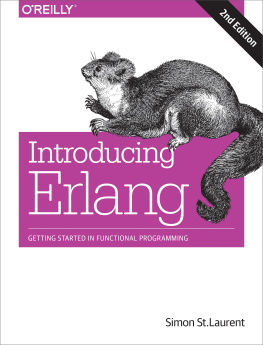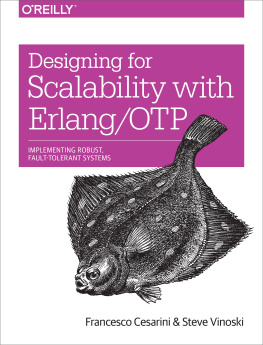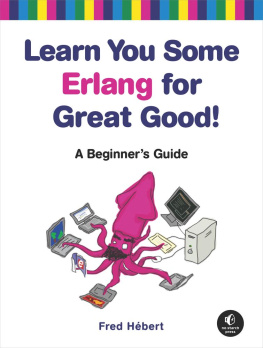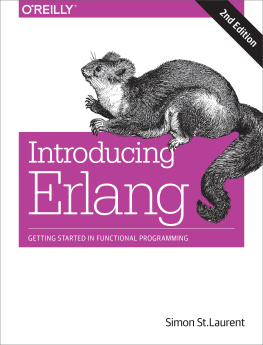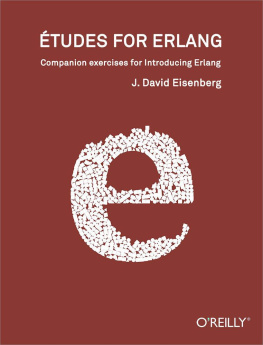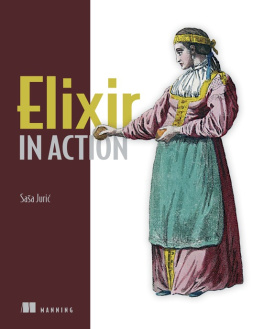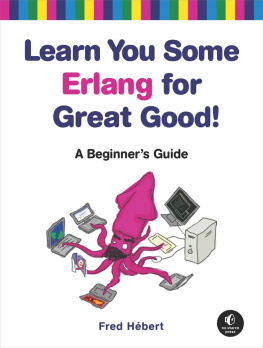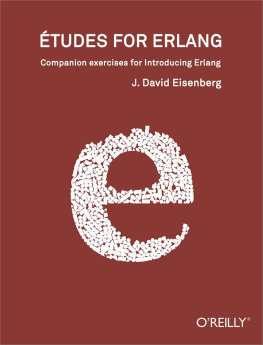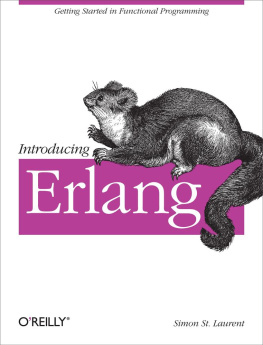Zachary Kessin - Building Web Applications with Erlang: Working with REST and Web Sockets on Yaws
Here you can read online Zachary Kessin - Building Web Applications with Erlang: Working with REST and Web Sockets on Yaws full text of the book (entire story) in english for free. Download pdf and epub, get meaning, cover and reviews about this ebook. year: 2012, publisher: OReilly Media, genre: Computer. Description of the work, (preface) as well as reviews are available. Best literature library LitArk.com created for fans of good reading and offers a wide selection of genres:
Romance novel
Science fiction
Adventure
Detective
Science
History
Home and family
Prose
Art
Politics
Computer
Non-fiction
Religion
Business
Children
Humor
Choose a favorite category and find really read worthwhile books. Enjoy immersion in the world of imagination, feel the emotions of the characters or learn something new for yourself, make an fascinating discovery.
- Book:Building Web Applications with Erlang: Working with REST and Web Sockets on Yaws
- Author:
- Publisher:OReilly Media
- Genre:
- Year:2012
- Rating:4 / 5
- Favourites:Add to favourites
- Your mark:
Building Web Applications with Erlang: Working with REST and Web Sockets on Yaws: summary, description and annotation
We offer to read an annotation, description, summary or preface (depends on what the author of the book "Building Web Applications with Erlang: Working with REST and Web Sockets on Yaws" wrote himself). If you haven't found the necessary information about the book — write in the comments, we will try to find it.
Why choose Erlang for web applications? Discover the answer hands-on by building a simple web service with this book. If youre an experienced web developer who knows basic Erlang, youll learn how to work with REST, dynamic content, web sockets, and concurrency through several examples. In the process, youll see first-hand that Erlang is ideal for building business-critical services.
Erlang was designed for fault-tolerant, non-stop telecom systems, and building applications with it requires a large set of skills. By the end of the book, youll have the information you need to build a basic web service and get it running.
- Explore the power of Erlang and REST for building web services
- Serve static and dynamic content with the Yaws web server
- Use different methods for outputting data to user, such as encoding Erlang data structures into JSON or XML
- Build an application to listen for HTTP requests, process them, store data, and return useful data
- Go beyond the request-response modelpush data to clients with web sockets
- Use Erlang and Yaws to stream data from the server to a client
A book which is truly needed and will help get Erlang to the next level.
Francesco Cesarini, CEO of Erlang Solutions, author of Erlang Programming.
Zachary Kessin: author's other books
Who wrote Building Web Applications with Erlang: Working with REST and Web Sockets on Yaws? Find out the surname, the name of the author of the book and a list of all author's works by series.



